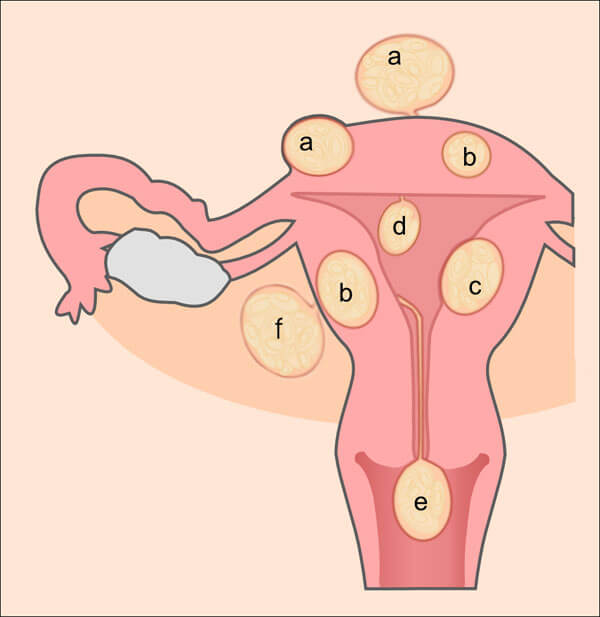
- How common is the occurrence of fibroids ?
It is the most common benign (non cancerous) tumour of the uterus. It is said that 15 to 20 percent of women above 30 years of age and 30 percent of women above 40 years of age have fibroids. - What are the causes of fibroids ?
The exact cause for occurrence of fibroids is not known. It tends to run in families and patients often have family history of fibroids. African women are 2 to 3 times at a greater risk for developing fibroids. - What are the symptoms of fibroids ?
Majority of women are asymptomatic or may have mild discomfort. Women may have heavy menstrual bleeding, abdominal pain, backache. Sometimes the fibroid grows into much larger size and women are asymptomatic. They may have abdominal swelling, urinary frequency, constipation (due to bowel or bladder compression) or decreased urine output (due to ureter compression). On ultrasound it may be an incidental finding. In patients of reproductive age group, fibroids may cause infertility and recurrent miscarriages. - Do fibroids pose any danger ?
Leiomyosarcoma (cancer of fibroids) is an uncommon condition. Incidence is less than 1 in 100000 women. We routinely do rPRESS scoring, Sr. LDH levels, MRI if suspicion arises. - What is the best treatment for fibroids ?
In patients with severe or recurrent symptoms, surgery is the best treatment. In older age groups with family completed, hysterectomy is advocated and in younger age groups and fibroids causing infertility, myomectomy is advocated. - Why is Laparoscopy Surgery better for fibroids ?
Small incisions, less blood loss, less pain, faster recovery, less postoperative adhesions. Fibroids which are inside the cavity can be removed hysteroscopically. - How are big fibroids removed through small incisions ?
Fibroids during laparoscopic myomectomies are removed with the help of a special machine called morcellator which has rotating blades which cuts thr fibroids into strips. We routinely do In-Bag morcellation which prevents spread of myoma micro pieces and occurrence of parasitic myomas in future. - How are fibroids which are lying inside the cavity of uterus removed ?
Fibroids which are lying inside and/or protruding into the cavity are removed hysteroscopically (a small endoscope of 2.9 mm introduced vaginally). It is a day care procedure. - How can recurrence of fibroids after myomectomy be prevented ?
We do Laparoscopic Uterine/internal iliac ligation in combination with myomectomy to prevent recurrence of fibroids. It is a safe procedure if done in experienced hands and free of any side effects. It has no effect on future fertility and doesnot cause any decrease in blood flow in fetus after woman conceives (it has been proven in multiple studies). It is safer and better than procedures like uterine artery embolization (which has many side effects on uterine circulation and future pregnancy). - Any comments regarding drugs which shrink fibroids ?
It is a common myth that certain new drugs like ulipristal, mifepristone, etc shrink fibroids. In fact it may be associated with side effects like endometrial hyperplasia, renal, liver dysfunction. They are also expensive. So the total cost of months of these drug therapies may be equal to the cost of surgery. We have had so many cases where we have operated upon patients with failed medical management.

